Fizzy Baking Soda Hearts: Valentine’s Day Science (with Video)
Something I am really working on this year is increasing the amount of preschool science activities that I plan for the kids, especially Ella.
This fizzy baking soda hearts science experiment is a great, fun introduction to chemistry – just in time for Valentine’s Day!
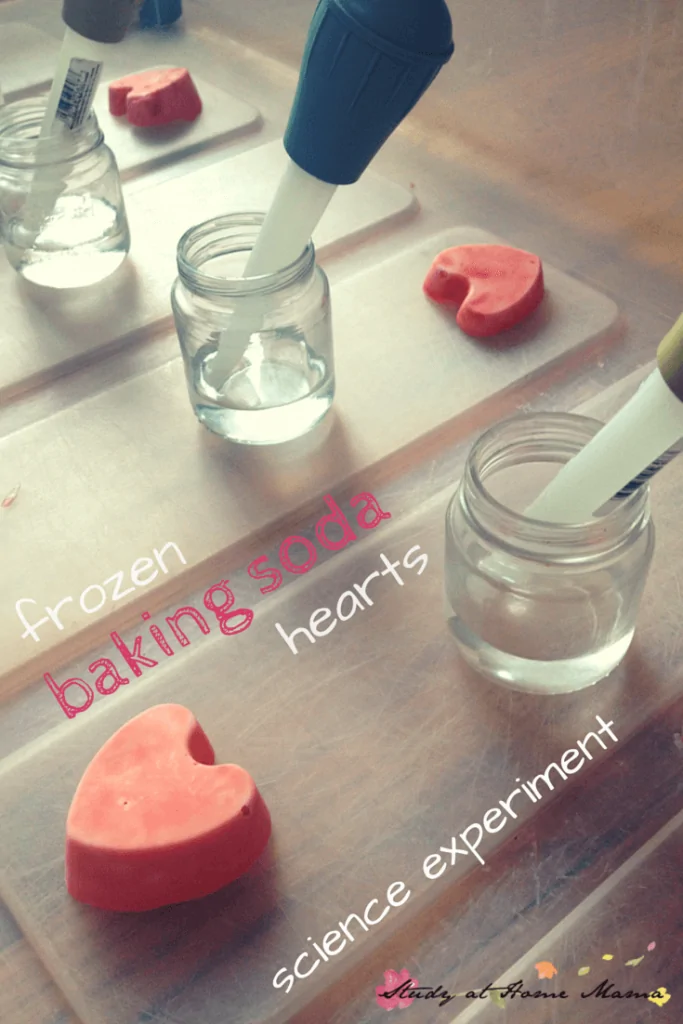
If you’ve never done a vinegar and baking soda experiment, you’re in for a treat! Make sure to have extra hearts on hand, because the kids will beg for more!
If you’ve already done vinegar and baking soda experiments, now might be the time to introduce your children to the concept of a science experiment and the different steps involved (called the scientific method), which we will outline below.
This year, Ella and I decided to revisit this activity and film a fun video to share – check it out before grabbing the recipe below:
First, to make the baking soda hearts, mix a generous amount of baking soda with just enough water to make it into a paste. I added some red food dye to the water before making the paste, but that’s optional. (We used 1 cup baking soda and 1/4 cup water, but you may need to adjust your measurements slightly.)
I prefer using my silicon muffin pan (the same one we used to make block crayons) or you could alternatively fill in some cookie cutters on a parchment paper lined tray.
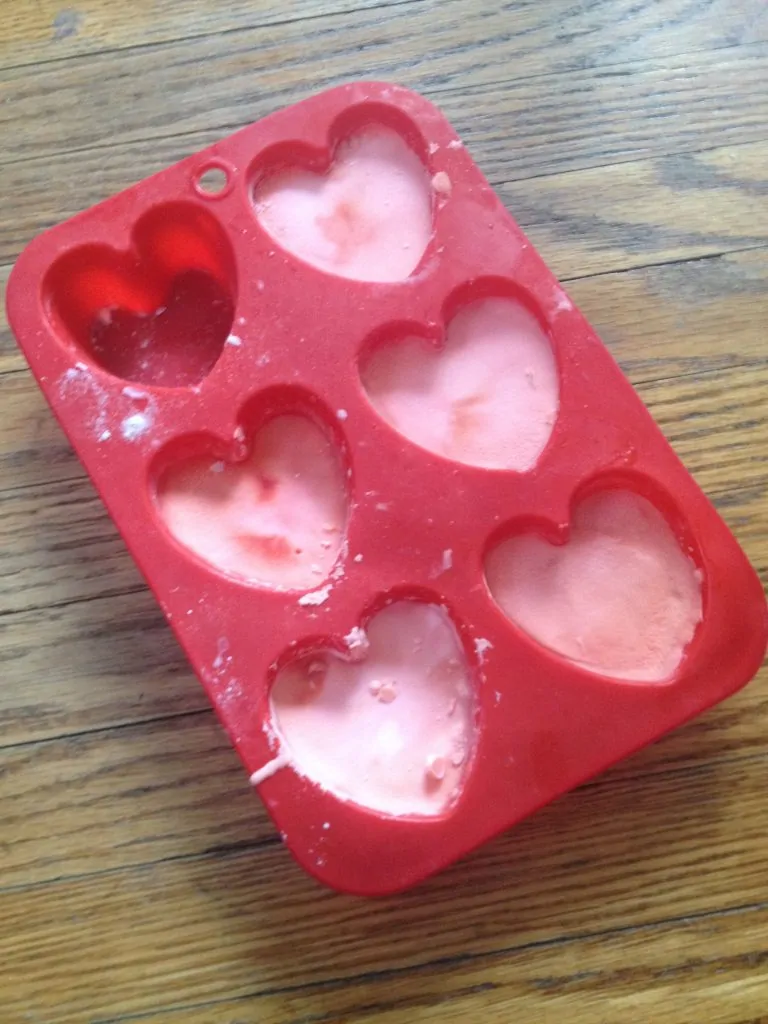
Freeze the baking soda hearts for two hours or overnight.
In the meantime, find a container that can get messy! I had four big kids and our “junior big kid” doing this preschool science experiment, so I used the container that we used to use for an impromptu sandbox.
I set up four small baby food jars with a quarter cup of vinegar each – I should have added at least half a cup as I had to add extra in during the experiment – and added these great mini basters to each jar.
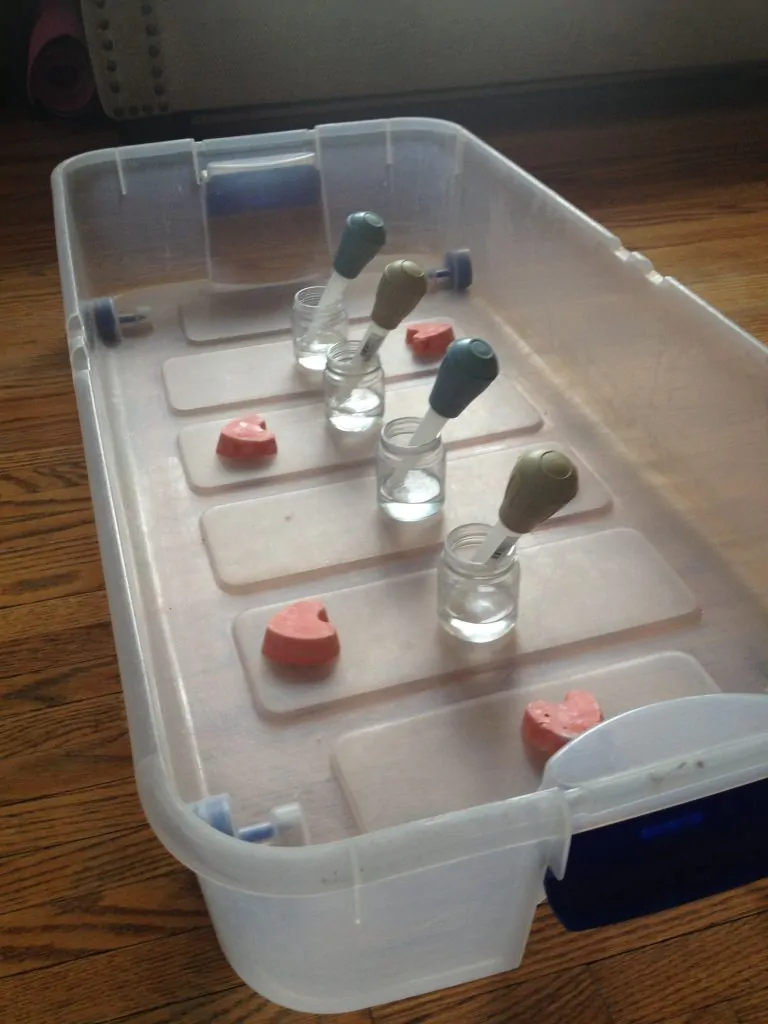
Get the frozen hearts out of the freezer, give one to each child and show them how to squeeze the vinegar into the baster, and then wait until their baster is over the heart before squeezing the vinegar out.
Look at those pink fizzy hearts!
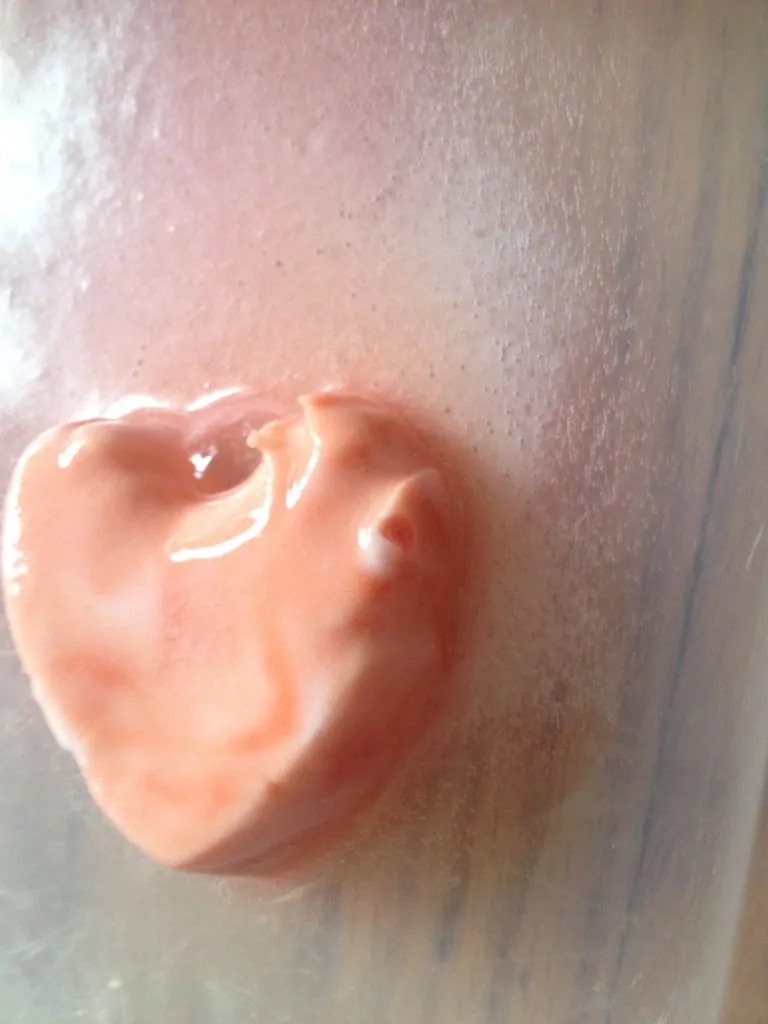
I love that this is at once a science experiment – teaching wonder, process, and patience – while being a fun sensory experience (touching and watching the fizzy hearts) and a practical life opportunity, with the children learning how to use a baster.
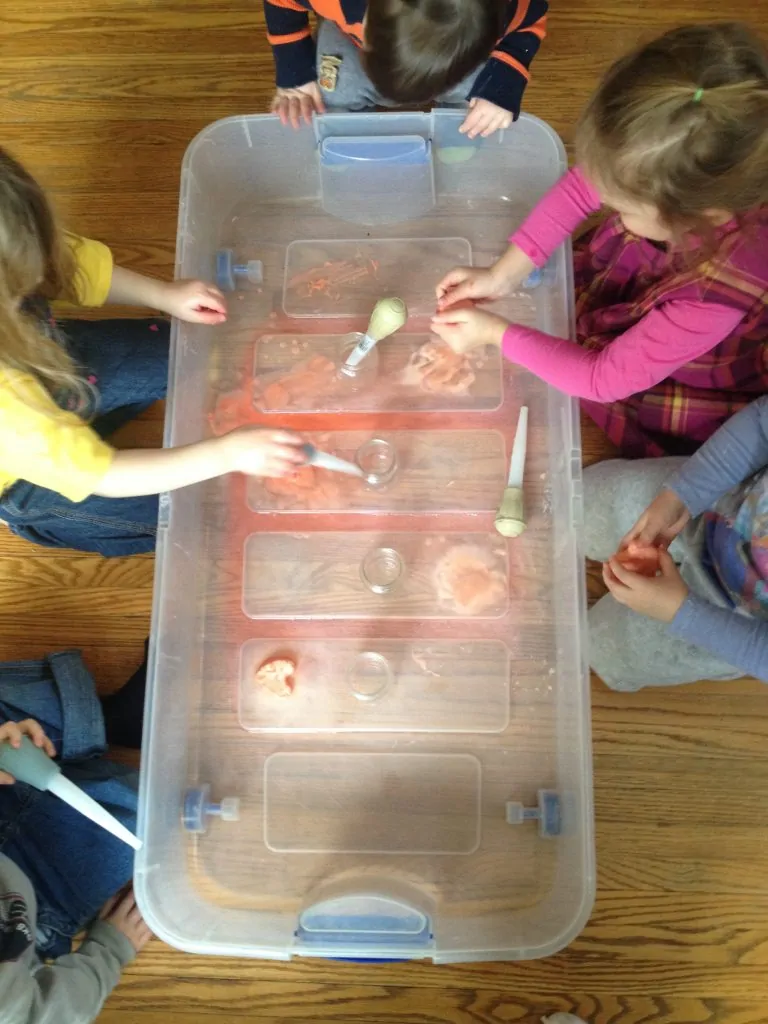
Each heart took about 20 minutes to fully dissolve, but the kids loved every minute of it! The one heart that we allowed to get to room temperature dissolved much quicker, which prompted some interesting conclusions:
- the ice protected the baking soda
- the vinegar melted both the ice and baking soda
- vinegar is slow on cold things
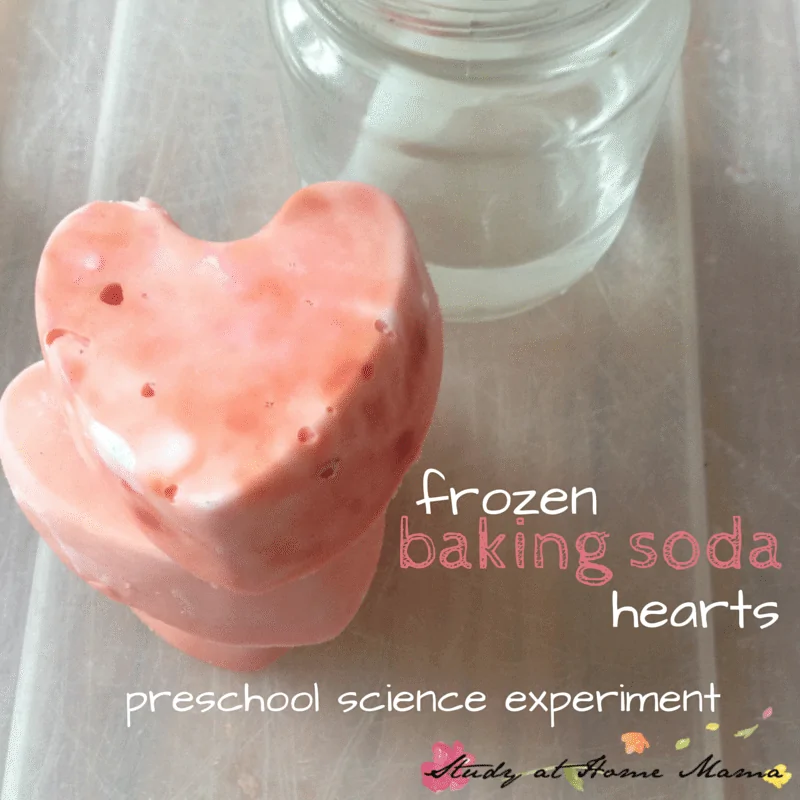
If you’re going to take the opportunity to teach the kids the basic foundation of the scientific method, gather them together before you get the hearts out of the freezer, or just have one heart on hand to show them.
- Ask a Question
Tell them that you’ve made and ask them what they think is going to happen when you squirt vinegar on the frozen baking soda hearts. - Do Background Research
Encourage them to remember their past experiments. - Construct a Hypothesis
What do they think will happen? This may sound odd, but my kids love to start sentences with, “My hypothesis is…” It’s something that they learned from Dinosaur Train and I think they really enjoy being able to have a way to express their ideas in a profound way. - Test your Hypothesis by Doing an Experiment
Do the experiment, encourage them to make observations throughout – what do they see happening? - Analyze Data and Draw a Conclusion
Have them discuss what they observed and help them look up extra information online if they have additional questions about why something happened. - Communicate Results
Have your child communicate or document their experiment’s results in the way that they are most interested. Allow them to perform, draw, write – whatever method of communication they need to use at the time.
I hope you enjoyed our fizzy baking soda hearts science experiment! If you liked this post, please consider signing up for our weekly (or daily) newsletters to get free post updates to your e-mail!
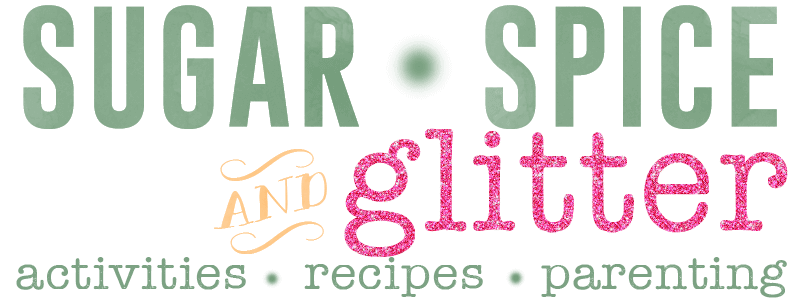
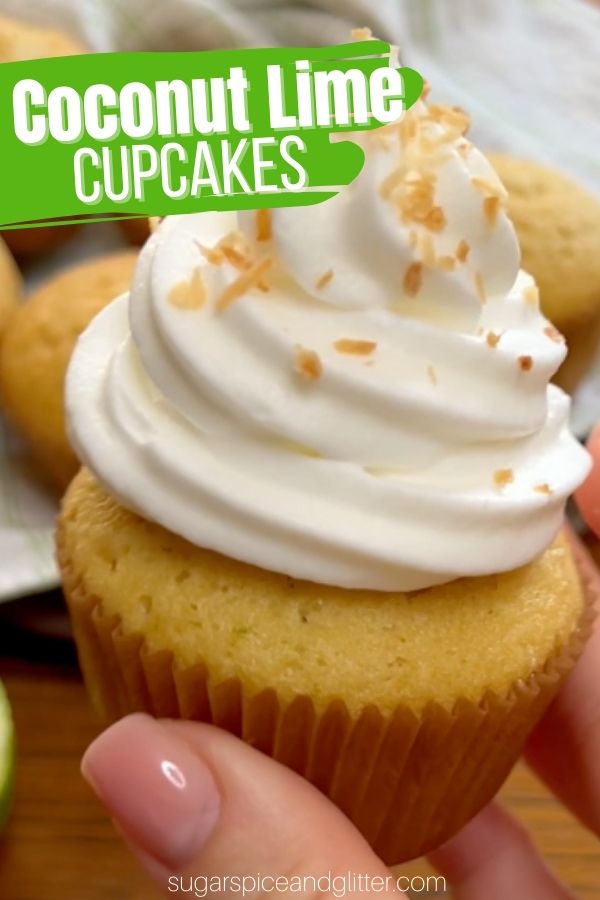
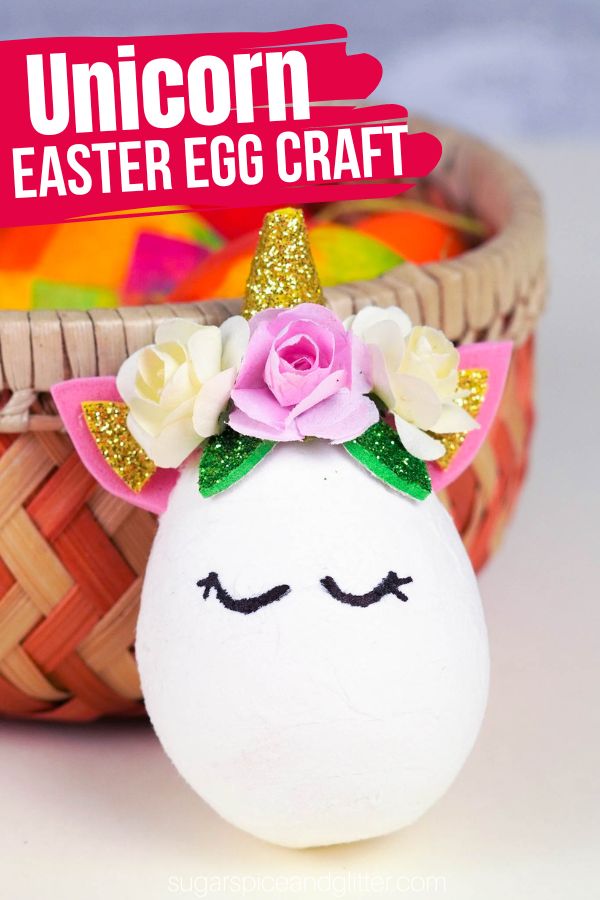
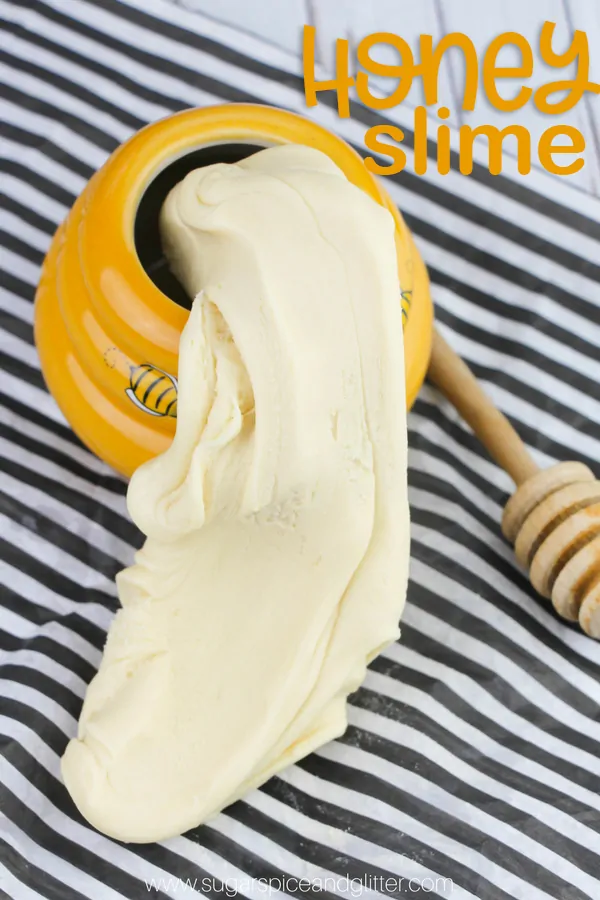
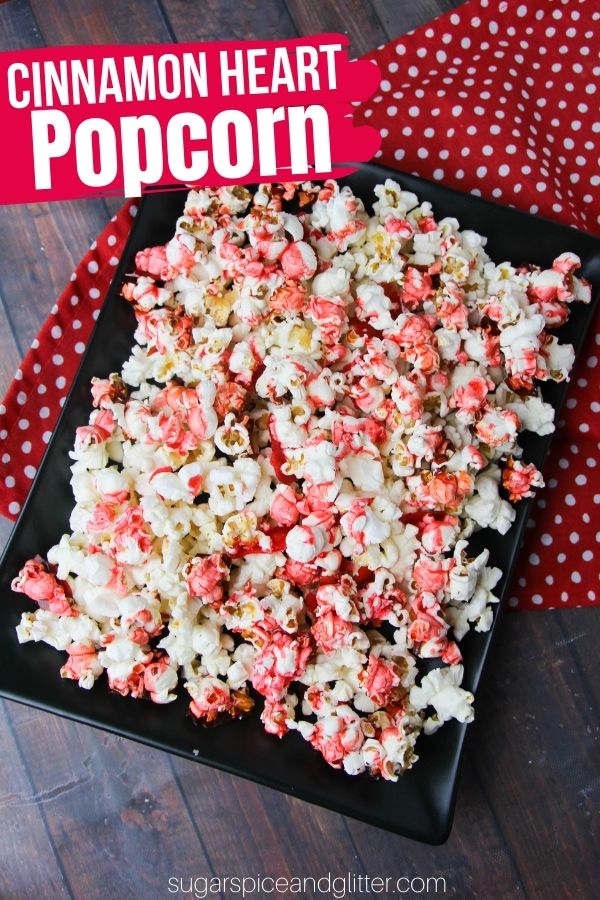
Great post! I love that it lasted for 20 minutes. The questions you have included are very useful 🙂
Thanks, Amie!
What a great experiment. Want to do this activity with my son. Thanks for sharing!
Thank you, Tatiana – I hope he loves it!
Can you use a metal small muffin pan to freeze the baking soda in?
That’s a great question – if you had to use a metal pan, I would use something to line it so that you can easily remove the frozen baking soda cubes. Maybe an ice cube tray would be better – or lining the metal baking tray with parchment paper?
How far in advance of using them can I make them?
How long do you think they would last in the freezer? And how long would they last out of the freezer?
Honestly, they will last a long time – they just might start smelling like the freezer after a few weeks!
They last outside of the freezer for about 20 minutes before the consistency will dramatically change depending on the temperature of the room. I would postpone taking them out of the freezer until just before you’re ready, or as close to that time as possible.
I see you don’t monetize your blog, don’t waste your traffic, you can earn additional bucks every month because you’ve got high quality content.
If you want to know how to make extra bucks, search for: Ercannou’s essential tools
best adsense alternative
Lovely work
This is so cool! I love learning about science in fun ways.
I’m so glad you liked the post, thank you for your comment!
Fantastic content! Thanks for sharing. The information provided is incredibly helpful. http://www.drywallburnabybc.com/